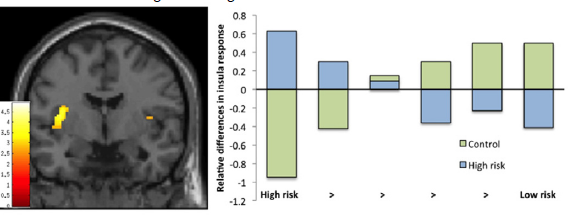No CrossRef data available.
Article contents
EPA-0403 - Healthy Individuals at Familial Risk for Depression Show Stronger Activation of Left Insular Cortex with Riskiness of Choices
Published online by Cambridge University Press: 15 April 2020
Abstract
Healthy first-degree relatives to patients with depression have increased risk for developing depression and show brain structure and response anomalies in regions responsible for processing rewards. However, inherent behavioral and neural abnormalities related to valuebased decision making have not been explored in these individuals.
To address this, in a functional MRI study we investigated healthy mono- or dizygotic twins with or without a co-twin history of depression (high risk: n=36 and low-risk: n=31, respectively). Using SPSS10 and SPM8 statistical packages we compared behavioral and neural responses to gambling choices of twins at increased familial risk with twins without familial risk for depression.
We found no differences in risk choice behavior between high- and low-risk twins. Across groups, increased behavioral risk correlated with response in anterior and posterior cingulate cortex, ventral striatum, insula and raphe nucleus, as expected. Compared with twins at low risk, high-risk twins showed increased activation of left insula with increasingly risky choices (Fig1).
Healthy individuals at high hereditary risk for depression show elevated activity in left insula when making high-risk choices, region previously found to be causally involved in value-based decision-making by promoting risk taking. This might indicate a higher neural effort in these individuals during risk taking.

- Type
- E07 - e-Poster Oral Session 07: Neurobiology, Bipolar Disorders and psychopathology
- Information
- Copyright
- Copyright © European Psychiatric Association 2014





Comments
No Comments have been published for this article.